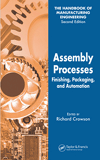BRISTOL, England—Q5D Technologies Ltd., a manufacturer of wire harness automation equipment for additive manufacturing applications, has unveiled a robot that automatically inserts connectors into components made of metal, ceramic or polymer.
The company calls its unique process “electrical function integration.” It claims that it “eliminates the need for separate, expensive, fault-prone wiring harnesses, minimizes design constraints, improves reliability and cuts costs."
The CY1000 is a self-contained manufacturing cell. Wiring can be co-located with the final assembly, eliminating the costly transportation of heavy harnesses.
"Almost all wiring harnesses are made by hand at present,” says Steven Bennington, CEO of 5QD. “With the demand for wiring driven by electrification, the Internet of Things and net zero, automation is the only way to keep pace."
The CY1000 features a robust, steel-frame gantry and robotic platform. “It is designed for standalone use or for easy integration as part of a process line, where it offers full-depth access for robotic loading,” explains Bennington. “With these diverse capabilities, the [machine] creates 3D shapes, adds components and connects them to each together with precision integrated wiring.”
Each machine can use a variety of specialized tools to add bare or insulated wire and extrude a wide range of polymers, including nylon and PEEK. It can also pick and place electrical connectors and components.
“The flexibility of the CY1000 is central to its capability to transform productivity,” claims Bennington. “Large components or parts (up to 1 meter in diameter), or multiple smaller parts, can be formed by molding, stamping or other traditional methods before being loaded into the manufacturing cell, which locates the part and adds electrical functions.”








